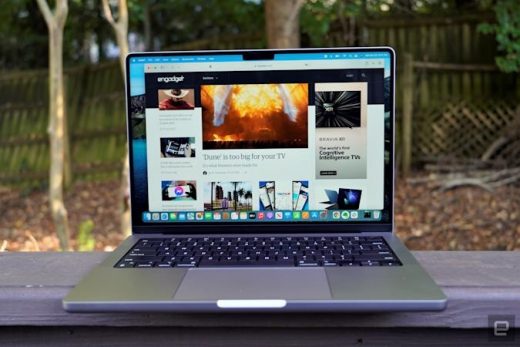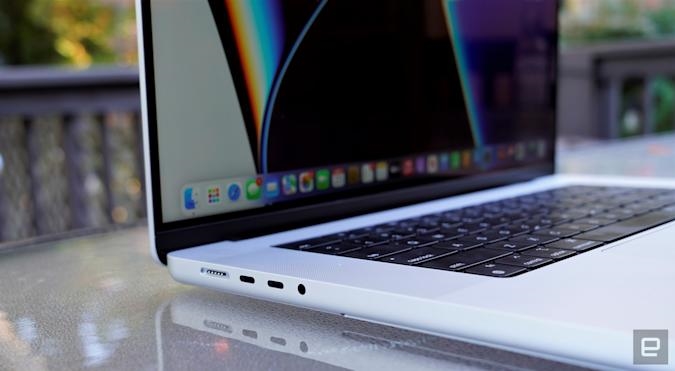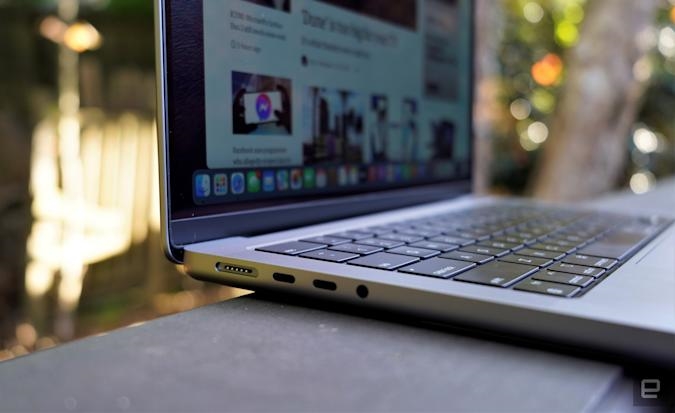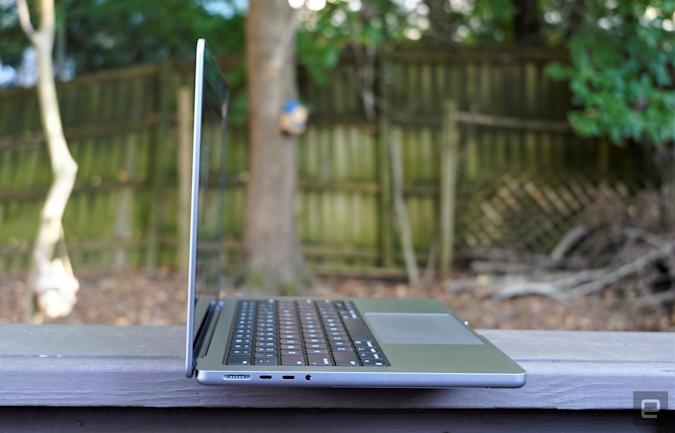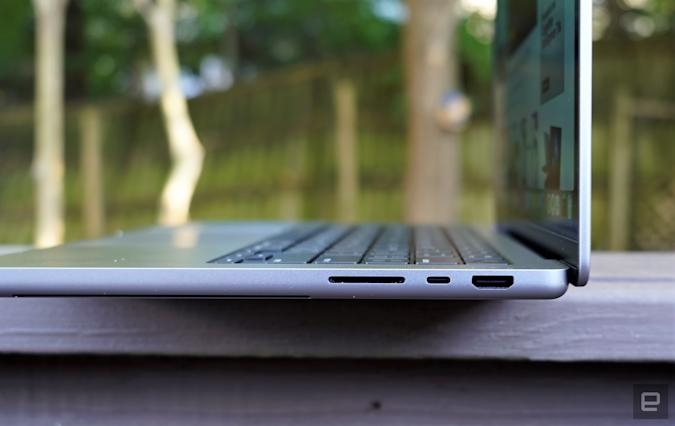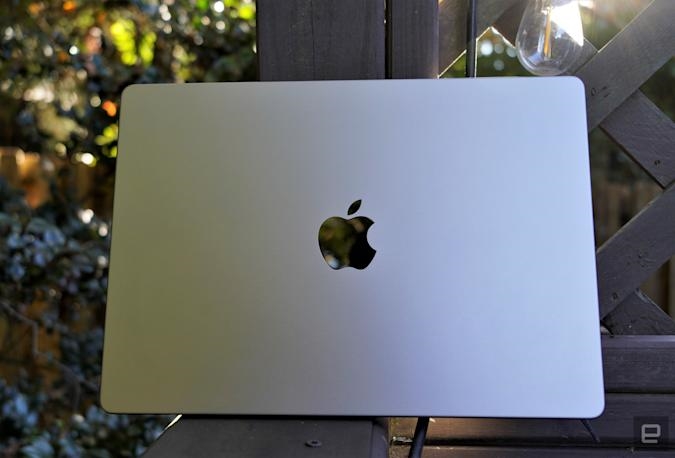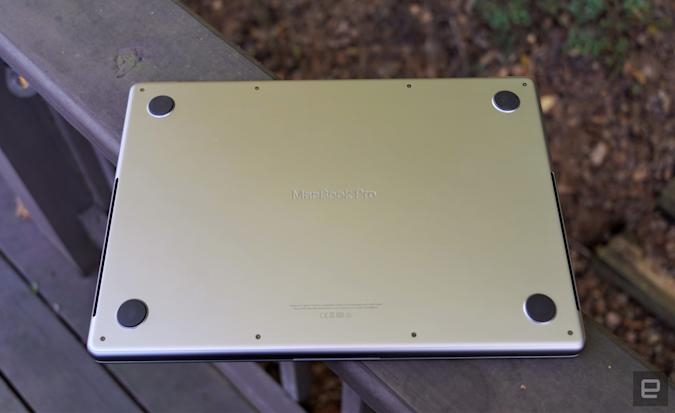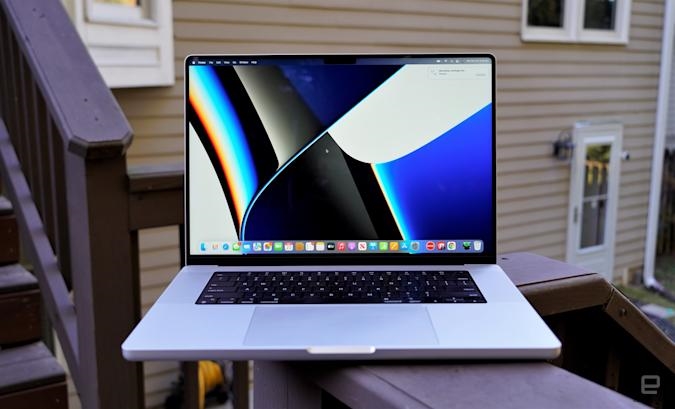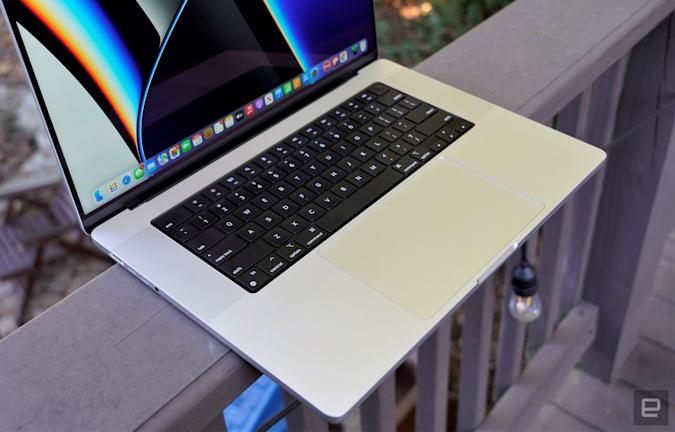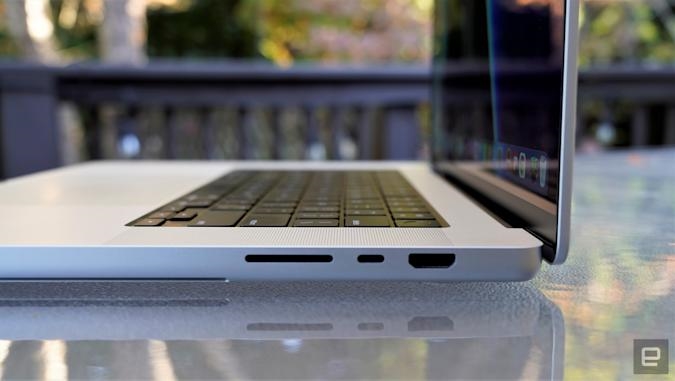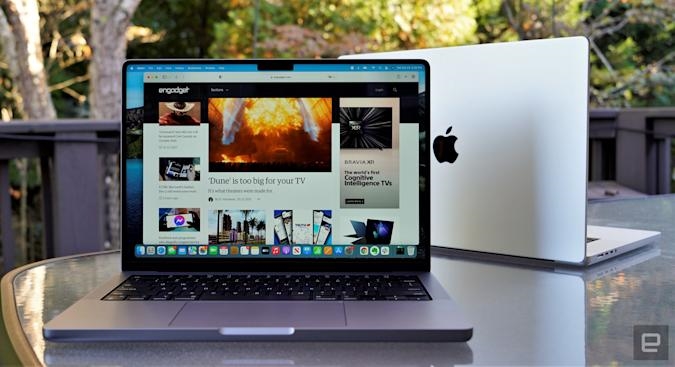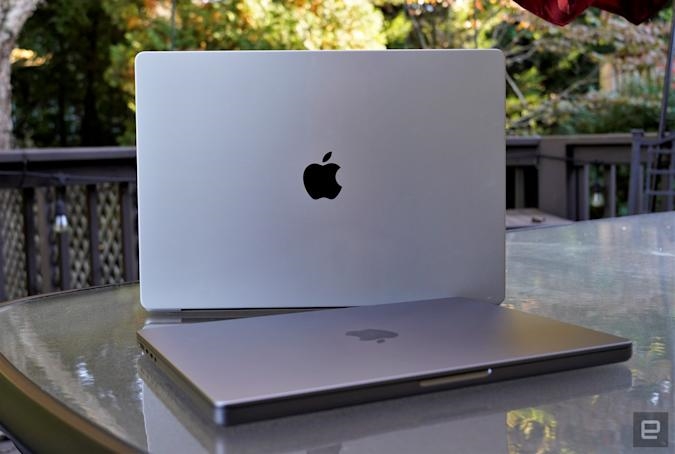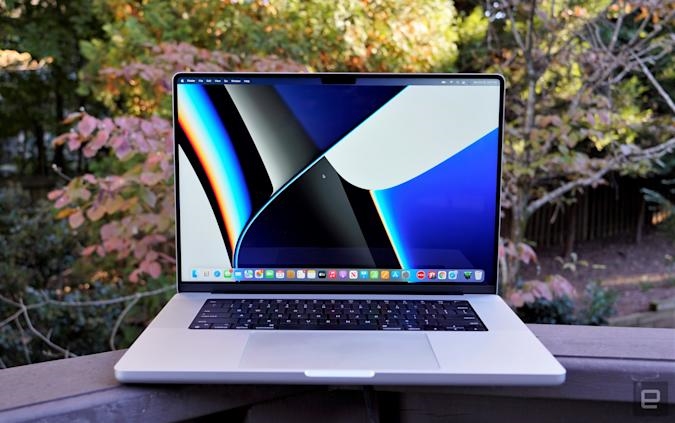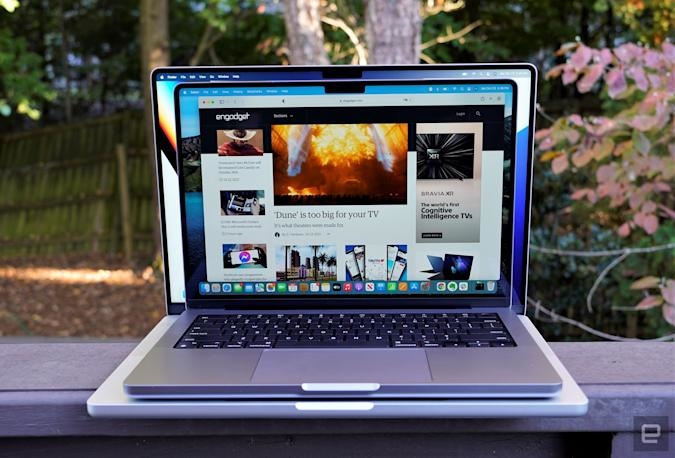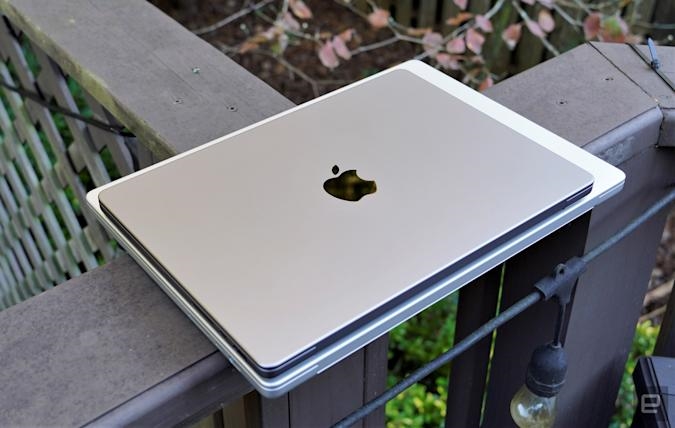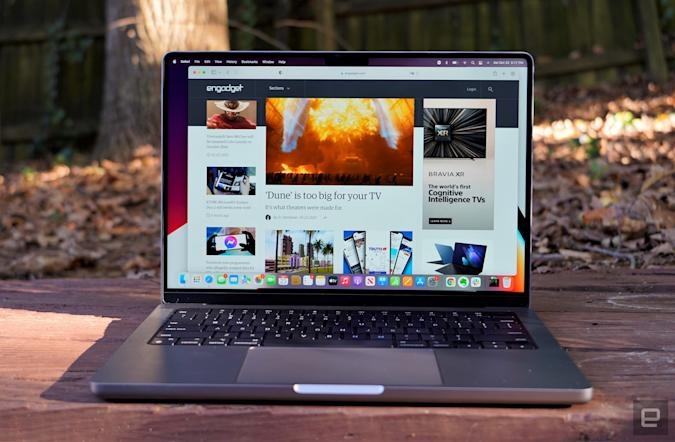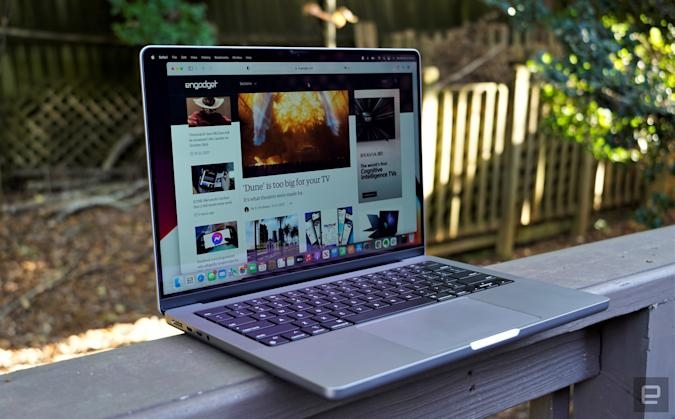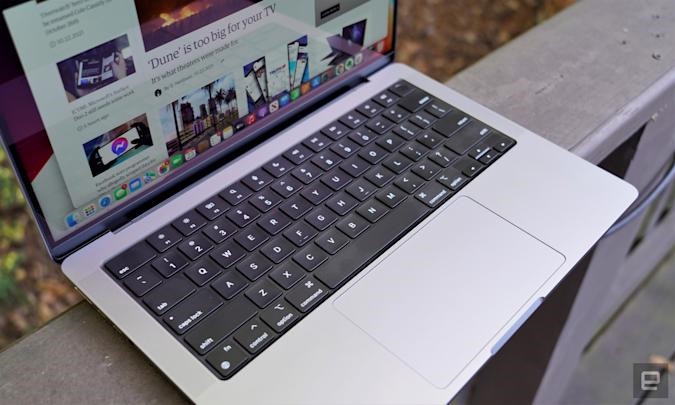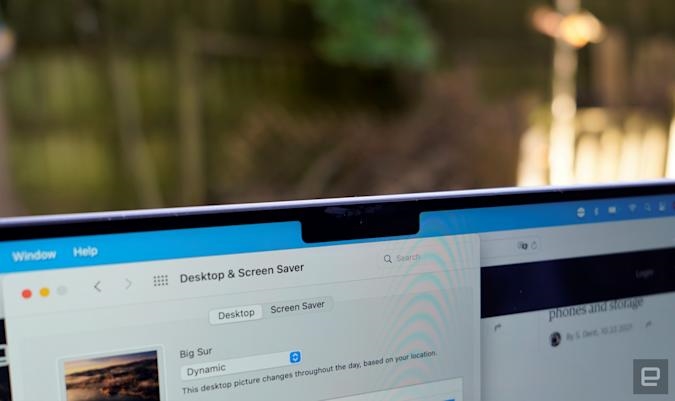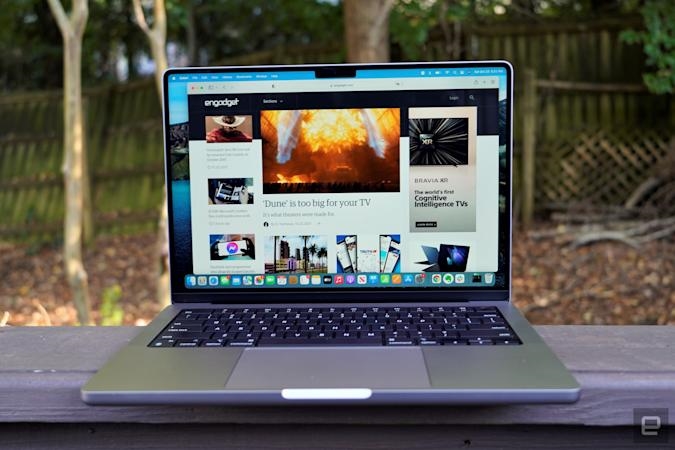Apple may release M2 14-inch and 16-inch MacBook Pros as early as this fall
MacBook Pro 14-inch and 16-inch review (2021): Apple’s mighty Macs
They represent the evolution of the M1 chip, while hearkening back to the PowerBook.

Apple is finally restoring balance to its portable lineup with the new 14-inch and 16-inch MacBook Pros. If you wanted a big-screen Mac notebook for video editing over the past year, you were stuck paying a premium for outdated Intel and AMD hardware. So, we’ve been eagerly awaiting an M1 upgrade for the 16-inch MacBook Pro, a machine I called Apple’s best laptop ever when it debuted two years ago.
Gallery: MacBook Pro 14-inch and 16-inch (2021)
But it’s worth remembering that, for all the hype around Apple’s M1 chip last year, it was a let down for creative professionals. It just couldn’t handle the kinds of heavy duty video editing and 3D rendering that they demanded, in part due to being capped at 16GB of RAM. That made the 13-inch MacBook Pro a bit of an odd duck, since the Air was nearly as fast.
MacBook Pro 14-inch (2021)
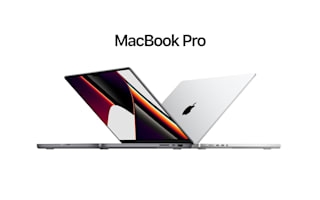
Pros
- Fast M1 Pro and Max processors
- Excellent Liquid Retina XDR Display
- Fantastic keyboard
- Most of the ports you want
- SD Card reader!
- Solid battery life
- Great speakers
Cons
- Pricier than the competition
- No memory or storage expansion
- Notch may annoy some
MacBook Pro 16-inch (2021)
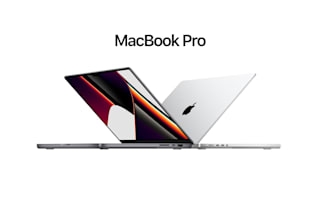
Pros
- Fast M1 Pro and Max processor
- Excellent Liquid Retina XDR Display
- Fantastic keyboard
- Most of the ports you want
- SD Card reader
- Excellent battery life
- Great speakers
Cons
- Pricier than the competition
- No memory or storage expansion
- Notch may annoy some
Apple’s redesigned MacBook Pros, powered by its new M1 Pro and M1 Max chips, are exactly what media professionals have been waiting for. The processors are far faster than last year’s M1, they support up to 64GB of RAM, and both laptops feature XDR display technology borrowed from the iPad Pro. But Apple also looked backwards as it stepped forward, restoring ports and adopting a design that resembles many of its older machines. Just call them PowerBooks, reborn.
What’s new
Apple isn’t currently planning to replace the 13-inch model with the MacBook Pro 14. It’s more an expansion of the highest-end model. It can do almost everything the 16-inch model can, it’s just smaller. (The only exception is “High Power Mode,” which gives the 16-inch M1 Max version a temporary speed boost.) That’s one way I’ve come to terms with the high $1,999 starting price. The bigger model now starts at $2,499, $100 more than the Intel version.
Both notebooks still look like MacBook Pros, with sleek unibody aluminum cases. But lean in a bit closer and you’ll notice some retro flourishes. They’re slightly thicker, with more bulbous edges that hearken back to Apple’s notebooks from the 2000’s. They’re also heavier than you’d expect: the 14-inch model comes in at 3.5 pounds, while the 16-inch varies between 4.7 and 4.8 pounds, depending on the chip you choose. That’s about half a pound heavier than the last 16-inch MacBook Pro.
All of that heft isn’t for naught, though. In part it allowed Apple to cram in a lot more ports. Joining three Thunderbolt 4 USB-C connections are a full-sized HDMI port, a MagSafe power connection, a high-impedance headphone jack and an SD card reader (cue triumphant horns). Sure, you’ll still need adapters to connect older USB Type-A devices, but at least you can offload photos and video without extra gear. You can still charge the notebooks over USB-C — always useful in a pinch — but the MagSafe connection is less likely to cause accidental falls and you won’t have to use a precious USB-C port just to stay powered up.
Looking at the MacBook Pro’s screens makes it clear they’re anything but retro, though. They feature 14.2-inch and 16.2-inch Liquid Retina XDR displays, respectively. Mini-LED backlighting lets them reach up to 1,600 nits of peak brightness, which is great for HDR content. The screens are a sharp 254 pixels per inch, with a 3,024 by 1,964 resolution on the 14-inch and 3,456 by 2,234 on the 16-inch. Neither are true 4K (the 16-inch comes close), but you’ll still be able to work on 4K and 8K video, just at a reduced scale.
Best of all is that the MacBook Pros support ProMotion, Apple’s technology that enables refresh rates up to 120Hz. With that flipped on, scrolling through web pages and documents just felt silky smooth. And after spending hours writing up this review, I definitely noticed that my eyes were less fatigued thanks to the speedy refresh rate. This is becoming more common in the laptop world. Microsoft already beat Apple to the punch by putting a 120Hz screen in the Surface Laptop Studio. ProMotion is also intelligent enough to lower the refresh rate when it makes sense, which goes a long way towards saving battery life.
Really though, you don’t have to think about all of the technology going into Apple’s Liquid Retina XDR displays. Just know that they look incredible, with eye-watering brightness in sunny HDR scenes and inky black darkness in night shots. These aren’t OLED screens, but mini-LEDs get Apple pretty close to that level of contrast.
Embracing the notch life
Now let’s talk about the elephant in the room: that notch in the middle of the screen. Much like the last batch of iPhones, Apple carved out a portion of the display to fit in a camera. In this case a 1080p webcam. Upon first glance, it’s almost laughable that Apple is leaning even more into a design element that everyone hates. But, honestly, the notch isn’t a big deal.
Apple wisely pushed the MacOS menu bar around the camera, so it’s really just taking up space that would go unused anyway. The menu bar also gets blacked out entirely whenever you put an app or video in fullscreen. You could also use a black wallpaper which effectively hides the notch.
I’ll happily give up a bit of screen real estate, though, if it means Apple can finally squeeze in a decent camera. And judging from the dozens of video calls I’ve been on over the past week, it’s a huge upgrade. There’s a clear leap forward in resolution, sharpness and detail compared to my 2017 MacBook Pro. And it definitely looks better than the M1 MacBook Air, which had a few tweaks, but was still stuck at 720p. It would have been nice to see FaceID on the MacBook Pro though, which would have brought it on-par with Windows Hello-equipped PCs. For now, you’ll still have to rely on the TouchID sensor on the power button.
In use
Our 14-inch review model was equipped with an M1 Pro sporting 16 GPU cores, 32GB of RAM and a 1TB SSD. The 16-inch had the 32 GPU core M1 Max, a 2TB SSD and a whopping 64GB of RAM. (This, by the way, marks the first time I’ve reviewed a laptop with that much RAM.) Both of Apple’s new chips also feature 10 CPU cores — for comparison, the M1 had eight CPU cores and eight GPU cores.
Just based on specs, I expected to see some wild performance improvements. And the benchmarks didn’t disappoint: According to GeekBench 5, both MacBook Pros blew away every Windows PC we reviewed this year by a significant margin. That includes the NUC 11 Extreme powered by Intel’s Core i9-11900KB, a high-end desktop CPU! The single-core performance on the M1 Pro and Max was similar to the M1, which is unsurprising. But the multi-core figures were far higher. Another nice plus: Both of these computers are equipped with very fast NVMe SSDs, which will be a huge help when working with large projects.
The GPU-heavy Geekbench 5 Compute score made it clear that Apple hasn’t completely surpassed the likes of NVIDIA and AMD, though. The 14-inch MacBook Pro was more than twice as fast as the Surface Pro 8 (running Intel’s Xe graphics) and the M1-equipped 13-inch MacBook Pro, while the bigger notebook was on-par with the Surface Laptop Studio equipped with an NVIDIA 3050 Ti. These aren’t bad scores, but it makes it clear that users who need serious power for 3D rendering or data crunching may be better off with PCs equipped with dedicated GPUs.
I don’t think those are the people Apple is trying to court, though. Instead, the 14 and 16-inch MacBook Pros seem like an attempt to get back in the good graces of audio and video producers. Apple’s new chips will certainly be more than enough for dealing with media. Both computers managed to convert a 4K video clip to 1080p in 34 seconds with Apple’s VideoToolbox hardware encoder, which is four seconds slower than the NUC 11 Extreme, but four seconds faster than the XPS 15. They were also among the fastest Cinebench R23 performers we saw this year — only the ASUS ROG Strix G15 gaming laptop bested them.
And before you ask, no, the M1 Pro and M1 Max don’t magically turn these computers into gaming rigs. Sure, everything on Apple Arcade runs smoothly, but that was true of the MacBook Air. When I tried to load Borderlands 3, one of the few semi-recent games that actually works on Macs, I just got an unplayable mess running below 30fps. Maybe the the guarantee of decent GPUs will encourage more game developers to build for Macs, but more likely they’ll just end up making sure their iPhone and iPad games run smoothly.
Surprisingly, I didn’t notice a huge difference in performance when I was running the MacBook Pros on battery. PCs often slow down dramatically whenever they’re disconnected from a socket, but not so with these notebooks. That’s useful if you need to encode something remotely and you’re willing to sacrifice battery life to get it done.
Don’t worry though, the efficiency of the M1 chip’s ARM design leads to great battery performance. The 14-inch MacBook Pro lasted 12 hours and 35 minutes in our benchmark, while the 16-inch went for 16 hours and 34 minutes. That’s over five hours longer than the last Intel model.
It’s clear that Apple listened to many of the complaints from Mac fans (and perhaps even lowly reviewers). But really, that’s something the company has been doing more over the years, like when it finally moved away from those awful butterfly keyboards to more tactile Magic Keyboards. By the way, typing on the 14 and 16-inch MacBook Pro remains excellent, and the trackpad is a dream to use, as always. And I didn’t miss the TouchBar at all—having a few short keys up top just felt more useful.
Apple didn’t skimp on the audio front either. Both MacBook Pros sport a six-speaker array, made up of two tweeters and four force-cancelling woofers. Simply put, they sound miraculous. I normally just play a few songs on notebook speakers to confirm how disappointing they are. But these laptops sounded like I was listening to two small bookshelf speakers, with transparent vocals and punchy bass. Yes, I’m as shocked as you are.
The 16-inch MacBook Pro sounds a bit better, since it has room for slightly bigger drivers, but both notebooks are enough for a private jam session. The MacBook Pro’s microphones also do a solid job of capturing speech during video calls. I wouldn’t use them to record professional music, as Apple suggested you could, but they’re probably fine for a quick podcast session on the road.
Wrap-up
So if you’re in the market for one of these new computers, which should you get? If you’re mostly using it for general productivity tasks, then I’d lean towards the 14-inch model, which was just easier to travel with. It’s a good option for coders and people who may not need a ton of screen real estate. But all of the video and audio producers I’ve talked to were unequivocal: they wanted to go big with the 16-inch model.
The biggest downside of the new MacBook Pros are their high prices — but really, what else do you expect from Apple? The 14-inch model, in particular, will probably give you the vapors if you’re comparing it to the 13-inch MacBook Pro. But in the world of gaming and high-end productivity notebooks, Apple’s pricing isn’t that far off. The Razer Blade 14, for example, is just two hundred dollars less than the MacBook Pro 14-inch. Dell’s XPS 15 OLED is around $500 cheaper than the cheapest 16-inch MBP, but that’s with a CPU that’s much slower than Apple’s. Once you start speccing that machine up, though, you’ll likely pay close to $2,500.
On the whole, these computers have practically everything we’d want in a powerful notebook. If you’re a creative professional with a large budget for a new computer, and you want something that’ll genuinely speed up your workflow, the new MacBook Pros are exactly what you need.
(21)

